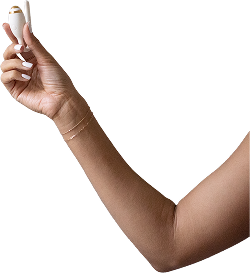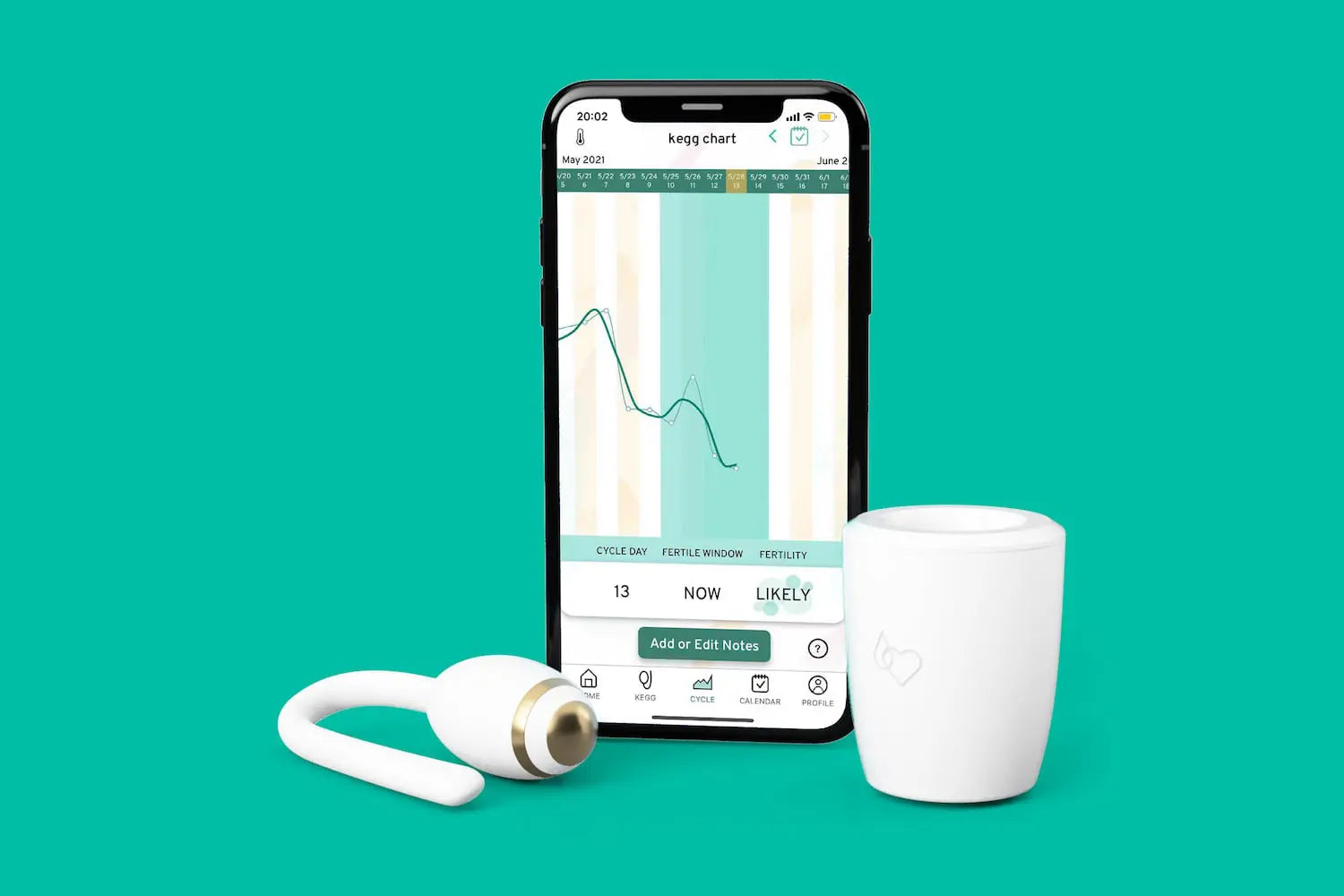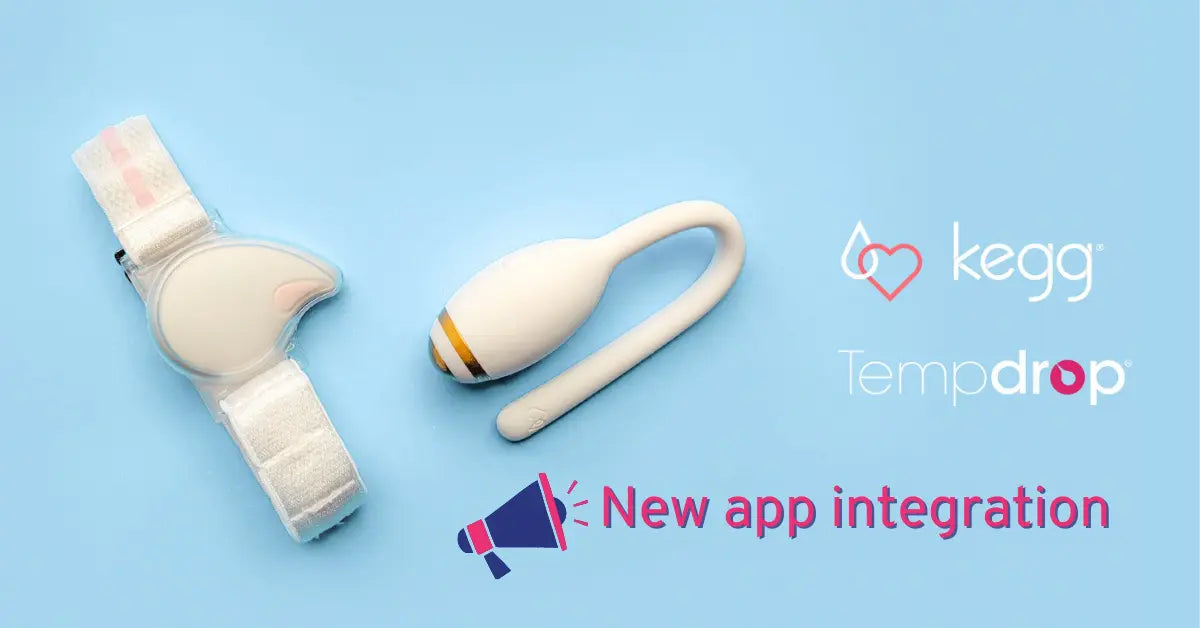At kegg, we are so grateful when users share their charts to gain our feedback and for our users’ learning.The best way we can learn from one another is by sharing the results from our keggs! It is always fascinating to see how greatly charts vary, but also follow the same trend. We recently received some very interesting charts, and our gracious users have allowed us to share them with you! These keggsters noted details that explained many variables in their charts. Please note, some users chose to use their kegg outside of the kegg intended purpose. Please see the notes within each chart review.
Use-Case: International travel, time change, lot of stress
Fertile Window: Cycle Days 11-16
In this very interesting chart, our user reports that she was traveling internationally throughout her cycle. She also stated that she was under immense stress and running on very little sleep. This gal didn’t use kegg all of her fertile window days so it seems like she ovulated on day 14 but it is possible that she ovulated on cycle day 15 when she did not take a kegg reading. Her luteal phase was 14 days long in her previous cycle. As you can see, her temps don’t follow a typical cycle pattern. Her temps were collected via Tempdrop in Celsius. She attributes this to her stress and changes in her sleep habits (travel to different time zones, inadequate sleep).
Despite her missing kegg readings, there is a visible downward kegg trend, with the lowest value of her whole cycle occurring during her fertile window on cycle day 14, followed by the rise (she missed some important readings to offer the clearest understanding of the cycle). Although her Proov tests did indicate that she ovulated as she suspected according to kegg, she did not conceive during this cycle as she did not have sex during her fertile window.

Use-case: Unprotected sex minutes before using kegg
Fertile Window: Cycle Days 10-14
On this chart, the user was not able to use her kegg on cycle days 13, 19-21, and 27-30, but she was still able to identify her trend. This user reports she had unprotected sex on cycle day 24 and used kegg minutes after, as she wanted to see how this would impact her trend for the day. Please note, per our user manual, it is not recommended that kegg be used for at least 8 hours after unprotected sex, as the residual fluid will impact the kegg results, which is seen here in this example. The residual fluids from unprotected sex distorted kegg sensing, resulting in an electrolyte dip. This should not be considered a “fertile window” as it does not follow the parameters for the drop and rise, and also is a known external variable that is responsible for the dip on that day. kegg is smart. The kegg method accounts for the trend and when it occurs within the cycle to make its predictions.
Taking a deeper look, we can see the user starts having a downward trend on cycle day 9. The lowest reading within her fertile window is on cycle day 13. Ovulation was thought to occur sometime between cycle days 13-15. After ovulation, her values remain elevated for a few days again suggesting ovulation has occurred.
Kegg’s intended purpose is to help user’s identify their fertile window for conception purposes. This user decided to not try to conceive this cycle, and only track her fertility for wellness and informational purposes.

Use-Case: stressed user, neglecting water intake
Fertile Window: Cycle Days 6-10
While we are aware that many factors can influence our cycles, electrolytes, and kegg results, it is fascinating to be able to see this in the form of a kegg chart! This user reports that she was significantly stressed during this cycle. She reports that she was not drinking enough water and this appeared to significantly impact her kegg readings. As we know, dehydration can impact both electrolytes and our cervical mucus. Below you will see the user’s kegg data charted in green, and her Tempdrop temperatures plotted in black. While her temperatures still follow a logical trend, her kegg data appears a bit chaotic! In addition, on cycle day 15, the user had unprotected sex close to the kegg testing time, resulting in a low value on that day. Again, please note that kegg should note be used within 8 hours of sexual intercourse as it impacts the kegg reading. While this user knew she was not taking good care of her body during this cycle it was an extra push to make a change when seeing how it impacted her kegg data which were negatively influenced by stress, dehydration, and sex close to testing with kegg. Be sure to stay hydrated!

Use-Case: Temps and Kegg
Fertile Window: Cycle Days 14-18
This is the first cycle with kegg for this user. This chart demonstrates how kegg requires at least one full cycle to get to learn your unique trends. As you can see the fertile window prediction is a bit early, as the kegg does not have previous cycles worth of values to use in its predictions. Instead, it has to rely on your cycle length only for this prediction. After the first cycle, kegg is able to use the kegg method for its predictions. A keen observer will see that starting on cycle day 13, this user begins to see a decline in values, signifying that she is about to enter the fertile window. As you can see, her lowest value occurs on cycle day 16, which is followed by a steep rise that was sustained for a few days, so we can assume it was the completion of her fertile window and she ovulated on or around cycle day 16.

Use-Case: Post-Partum, Long Cycle
Fertile Window: Cycle Days 45-49
This user is in the postpartum period and is currently breastfeeding. This user was able to make interesting observations. As you can see, she has a fertile valley between cycle days 45 and 50, (we have added a dashed circle). When hormones are still in-flux in the postpartum and while producing milk, it can be challenging to predict when your fertile window begins. In addition, kegg does not display fertile window predictions for cycles longer than 40 days and therefore this user was watching her readings, looking for a downward trend, to spot her fertile window independently. This user was fortunate to observe this downward trend. Had she used a Proov test 7 to 10 days after this valley, she could have confirmed ovulation and would know that she would likely get her period within the following week. In the luteal phase, it is typical to see declining values which do not signify a new fertile valley, based on the timing in the cycle.
For regular cycles, kegg’s algorithm allows for accurate predictions. During the postpartum and breastfeeding period, hormone levels fluctuate and the menstrual cycle is often irregular. Even if cycles have resumed to regular intervals, the presence of prolactin while producing milk can have an impact on their bodies electrolyte levels which in turn can yield kegg data that can be difficult to discern. If you decide to use kegg to monitor your fertility during the postpartum period, we recommend waiting until the second consecutive period after you stopped producing milk before starting to use kegg or after 2 consecutive cycles at least 6 weeks postpartum if not producing milk.
If you use any type of Fertility awareness-based method that includes tracking cervical mucus, then you can use the selected FABM postpartum protocol and compare your kegg data with your observations. Given that kegg is a device used to help users who are trying to conceive, it is not recommended that you rely on kegg for conception purposes.

Interested in having your chart reviewed? Submit your chart for review here.
Haven’t purchased your kegg yet? You’re in luck! For a limited time, get your kegg with $20 OFF + Free Shipping by using code tempdrop20 at www.kegg.tech. kegg is FSA/HSA eligible.



